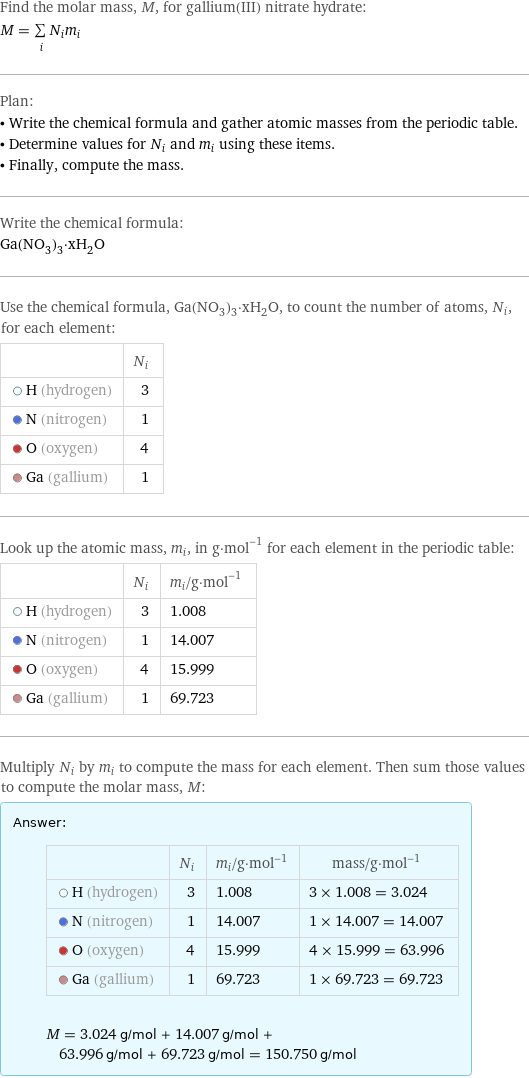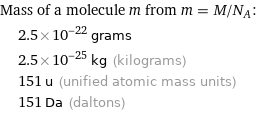Input interpretation

gallium(III) nitrate hydrate | molar mass
Result

Find the molar mass, M, for gallium(III) nitrate hydrate: M = sum _iN_im_i Plan: • Write the chemical formula and gather atomic masses from the periodic table. • Determine values for N_i and m_i using these items. • Finally, compute the mass. Write the chemical formula: Ga(NO_3)_3·xH_2O Use the chemical formula, Ga(NO_3)_3·xH_2O, to count the number of atoms, N_i, for each element: | N_i H (hydrogen) | 3 N (nitrogen) | 1 O (oxygen) | 4 Ga (gallium) | 1 Look up the atomic mass, m_i, in g·mol^(-1) for each element in the periodic table: | N_i | m_i/g·mol^(-1) H (hydrogen) | 3 | 1.008 N (nitrogen) | 1 | 14.007 O (oxygen) | 4 | 15.999 Ga (gallium) | 1 | 69.723 Multiply N_i by m_i to compute the mass for each element. Then sum those values to compute the molar mass, M: Answer: | | | N_i | m_i/g·mol^(-1) | mass/g·mol^(-1) H (hydrogen) | 3 | 1.008 | 3 × 1.008 = 3.024 N (nitrogen) | 1 | 14.007 | 1 × 14.007 = 14.007 O (oxygen) | 4 | 15.999 | 4 × 15.999 = 63.996 Ga (gallium) | 1 | 69.723 | 1 × 69.723 = 69.723 M = 3.024 g/mol + 14.007 g/mol + 63.996 g/mol + 69.723 g/mol = 150.750 g/mol
Unit conversion

0.15075 kg/mol (kilograms per mole)
Comparisons

≈ ( 0.21 ≈ 1/5 ) × molar mass of fullerene ( ≈ 721 g/mol )

≈ 0.78 × molar mass of caffeine ( ≈ 194 g/mol )

≈ 2.6 × molar mass of sodium chloride ( ≈ 58 g/mol )
Corresponding quantities

Mass of a molecule m from m = M/N_A: | 2.5×10^-22 grams | 2.5×10^-25 kg (kilograms) | 151 u (unified atomic mass units) | 151 Da (daltons)

Relative molecular mass M_r from M_r = M_u/M: | 151